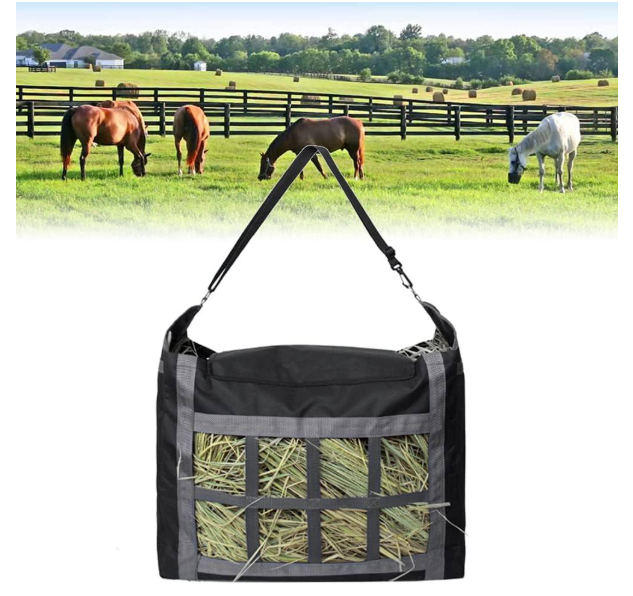Have you ever wondered why some horse owners sing praises about their hay supplies while others struggle with dusty or mouldy bales? Are you confused about what truly makes hay “horse quality” and where to find reliable sellers? If you find yourself nodding along, you’ve come to the right place. In this blog post, we’re diving into everything you need to know about buying the right hay and hay bags for your horses.
The health and happiness of your horse depend heavily on the quality of the hay it consumes. Many equestrians consider high quality hay for horses a non-negotiable, as it influences digestion, energy levels, and overall well-being. However, identifying horse quality hay can feel tricky, especially if you’re juggling a busy schedule or don’t have long-running experience in the industry. You want to keep your horse well-fed without shelling out heaps of money on subpar fodder.
Below, we’ll explore five practical tips for purchasing the best horse hay bags for sale. We’ll unpack simple ways to spot high quality grass hay, find trusted Australian sources, choose the right hay bag style, store your hay effectively, and balance cost with quality. By the end, you’ll understand what sets good quality hay for horses apart and discover how to buy hay like a pro. Ready to learn more? Let’s get started.
Recognising Good Quality Hay for Horses
When it comes to ensuring your horse’s nutritional needs are met, one of the first steps is learning to recognise truly good quality hay for horses. The look, smell, and feel of hay can speak volumes about its suitability. A horse’s digestive system relies on substantial roughage, so you’ll want to focus on selecting hay that is clean, free of dust, and retains an appealing fresh aroma.
How to Spot High Quality Hay for Horses (Colour, Texture, Aroma)
Not all hay is created equal. First, examine the colour. Most high quality grass hay typically ranges from a light green to a moderate green shade. A dull tan or brownish colour suggests the hay may be old, overheated, or lacking in nutrients. Next, gently touch the hay to check for texture. Good hay should feel soft rather than brittle or overly coarse. Finally, take a light sniff. A pleasant, sweet, and grassy scent is a strong sign of freshness. If you notice a musty or mouldy odour, it’s best to walk away.
What Makes Grass Hay Good Quality?
Grass hay usually provides the fibre horses need without being overly rich in starches. It comes from grasses like Timothy, Rhodes, or even a mixed pasture blend. For most horses, these types of hay are ideal for consistent feeding. Good quality hay for horses should be harvested at the right stage of maturity. If hay is cut too late, the stems become tough and harder to digest. When cut too early, the hay may not provide enough fibre. Striking a balance is imperative for proper nutrition.
How to Buy Hay from Reliable Sources
Knowing how to buy hay from the right suppliers can make all the difference. Even if you’re an expert at identifying high quality hay for horses, purchasing from the wrong place can land you with bales that fall short. Building relationships with reliable sources in Australia ensures you have a steady supply of top-notch fodder, even when the market experiences low stock or bad weather conditions.
Locating Trusted Australian Sellers and Feed Stores
Navigating feed stores and local farms can seem daunting at first, especially if you’re new to the area or just starting your equestrian journey. A good approach is to speak with fellow horse owners, riding clubs, or vets who might point you to consistent, reputable suppliers. Many Australian farms pride themselves on producing high quality grass hay, so don’t hesitate to ask questions about their storage conditions, cutting times, and any potential use of fertilisers or herbicides.
In addition to word of mouth, check local forums or Facebook horse groups for up-to-date recommendations. Experienced riders often share their experiences, helping you avoid questionable sellers. Keep an eye out for stores or farms willing to show you around or provide detailed information. Authentic suppliers will gladly discuss moisture testing or let you see their storage facilities to prove that their hay is kept in ideal conditions.
Selecting the Right Horse Hay Bag
Choosing the best horse hay bags for sale is about more than just convenience. A well-designed bag can manage your horse’s feeding pace, reduce waste, and keep hay off the stable floor. It can also prevent your horses from scattering hay everywhere, making the cleanup process less tedious. You’ll discover different styles, each with unique benefits to match various horse personalities and stable conditions.
Different Types of Hay Bags (Slow Feeders, Mesh, Traditional)
Slow feeder hay bags have risen in popularity because they encourage horses to take smaller bites over a longer period. This approach can help mimic grazing behaviour, which supports healthy digestion. In contrast, mesh hay nets or bags with wider holes allow larger mouthfuls. These can be great for horses that aren’t prone to gobbling their food too quickly.
Traditional hay bags often feature a single hole in the front, letting the horse pull out hay strands at a steady rate. You’ll want to consider your horse’s temperament when picking between these designs. A more passive horse might cope well with a slow feeder, while an active or impatient type may prefer something that offers broader access to the hay.
Factors to Consider (Capacity, Material, Durability)
Capacity is crucial—too small, and you’ll have to refill constantly; too large, and the hay may become exposed to dust or damp conditions for longer periods. Look for materials designed to withstand the nibbles and tugging of energetic horses. Heavy-duty nylon or tightly woven mesh can last longer, though they might come at a higher price.
Durability also depends on how spirited your horse is. Some hay bags have adjustable straps and reinforced edges, making them less likely to tear. Before you invest in a fancy bag, glance at product reviews or chat with horse owners who have tried the brand. This first-hand knowledge will keep you from wasting money on something that doesn’t hold up over time.
Storing and Handling High Quality Hay
No matter how good your hay is at the point of purchase, poor storage can drastically reduce its nutritional value. In Australia’s varying climate—ranging from humid coastal regions to drier inland areas—hay storage can become complicated. Making sure you preserve the quality of your bales is non-negotiable if you want them to remain safe and nutritious.
Best Practices for Storing Hay in Australia’s Climate
When storing hay, keep bales off the ground. Pallets or wooden slats allow for airflow underneath, preventing moisture buildup. Aim to store hay under a roof or in a well-ventilated shed to shield it from both sun and rain. If you must keep your hay outside temporarily, use a tarp that’s raised slightly above the bales to encourage air circulation.
Temperature also matters. In a hotter climate, consider investing in a high-quality shed with decent insulation and ventilation. Trapped heat can lead to mould growth or even spontaneous hay combustion in extreme cases. Regularly check for signs of dampness and discard any hay that shows spots of mould or a sour odour.
Protecting Horse Hay from Moisture and Pests
Moisture is the number one enemy of hay quality. If your region experiences heavy rain, fasten tarps securely or ensure your storage facility has a leak-proof roof. Bales stored in direct contact with wet ground can spoil at the base, wasting precious feed. Also, watch out for rodents and other pests. Rats and mice can chew holes in hay bales, leaving behind droppings that you’ll definitely want to avoid feeding to your horse.
One way to deter pests is by maintaining a clean storage area. Sweep away stray hay and seal any small gaps that rodents could use as entry points. Keep feed rooms well-lit and consider natural pest-deterrent methods, like peppermint oil, if you want a chemical-free option. Regular checks ensure you catch any issues before they become major headaches.
Balancing Cost and Quality
High quality hay for horses can be expensive, but that doesn’t mean you have to break the bank to maintain your horse’s nutrition. Striking a balance between cost and quality is possible if you compare prices, plan your purchases, and keep an eye out for deals. You’ll often find that spending a bit more upfront on reliable hay saves you money in the long run, as you reduce wastage and minimise health risks.
Managing Your Budget Without Sacrificing Hay Quality
Before deciding on a supplier, gather quotes from multiple sources. Some sellers may offer a better price if you agree to regular purchases. You’ll also want to think about the type of hay. Premium varieties—such as certain grass blends with higher protein—may not be necessary for every horse. Always tailor your hay choice to your horse’s age, workload, and health condition. A horse in heavy work or lactating mares might require more nutrient-dense hay, while an easy keeper can thrive on a slightly lower-energy blend.
Bulk purchases can help tighten your budget, but only if you have adequate storage. Watch out for hidden costs like delivery fees, which can vary widely. Also, consider timing. Buying hay in peak season can be more expensive. If your storage allows, stock up during periods when local growers have good supply. This simple trick often yields better bargains and fresher hay.
Comparing Prices and Finding Deals on Hay Bags
The market for hay bags has grown, meaning there are plenty of styles and brands to choose from. Don’t just pick the cheapest design without investigating durability, as flimsy bags might tear and leave you buying replacements in no time. Check product descriptions carefully. If you’re shopping online, consider websites that compare product features, or read user reviews in Facebook groups dedicated to horse care.
Keep an eye out for sales or clearance events at local tack shops. Sometimes, end-of-season stock gets discounted to make room for new inventory. If a particular hay bag is getting rave reviews from fellow horse owners, see if the manufacturer has special offers or a loyalty programme. Balancing cost with quality requires a bit of research, but your patience often pays off.
Conclusion:
Congratulations on making it this far! You’ve explored everything from identifying good quality hay for horses to selecting a durable hay bag. It’s clear that high quality grass hay and sturdy feeding solutions are critical to your horse’s well-being. By knowing how to buy hay from trustworthy sources, checking for freshness and aroma, investing in the right hay bag, and storing everything correctly, you’re already miles ahead in providing top-tier nutrition for your beloved horse.
When you’re ready to put these tips into action, start small by visiting local farms or feed stores for hands-on hay inspections. If you have the space, consider purchasing a decent number of bales at once to save on costs. At the same time, track your horse’s response to the new feed and the hay bag you’ve chosen. If something doesn’t work, tweak your approach and try again until you find the perfect combination.
Ultimately, ensuring your horse has consistent access to horse quality hay can make an enormous difference in health, temperament, and performance. From slow feeder bags that encourage leisurely chewing to bulk bargains that let you stock up for months, each decision you make weaves into the bigger picture of proper horse care. Armed with these five tips, the path to securing quality hay and the right hay bag should feel more straightforward. So go forth and enjoy the peace of mind that comes with knowing your horse’s nutritional needs are in great hands.










